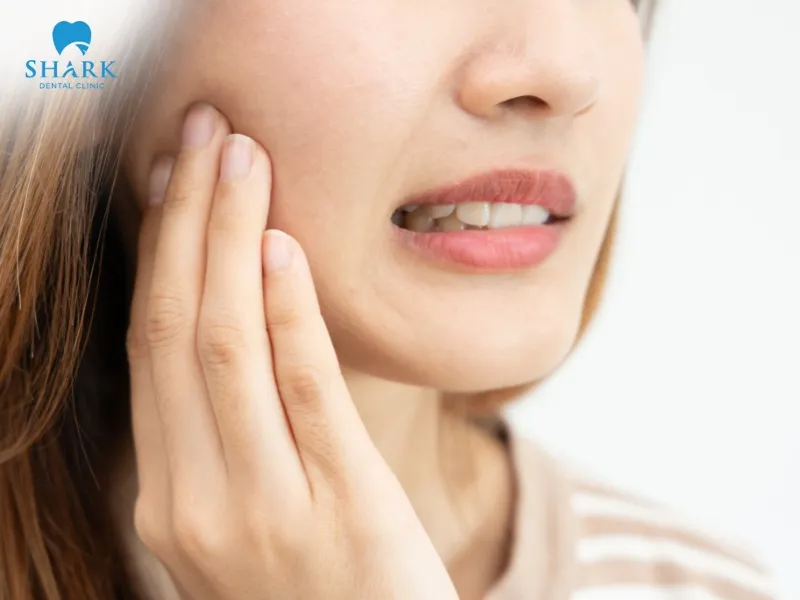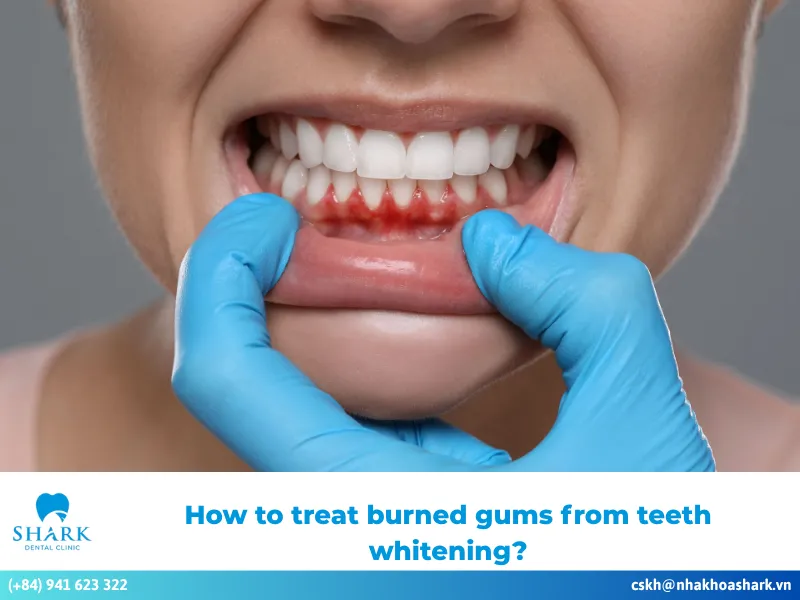Having bright, evenly colored teeth is something many people desire. In addition to professional whitening treatments at dental clinics, you can also try some at-home methods. In this article, we’ll introduce you to the oil pulling teeth whitening—a natural way to clean and brighten your smile. Let’s take a closer look!
Should you use oil pulling?
Oil pulling teeth whitening is a natural method that has shown positive results and is widely practiced today. This method has ancient origins, dating back hundreds of years in traditional Indian medicine (Ayurveda). In recent years, oil pulling for teeth whitening has become more commonly shared and practiced around the world.
Common oils used for oil pulling include coconut oil for teeth whitening and sunflower oil. When these oils are swished inside the mouth and moved between the teeth and around the gums, they help clean the oral cavity by “pulling out” bacteria and removing leftover plaque. As a result, teeth become cleaner and brighter, leading to a more confident smile.
According to Dr. Damien Brady, Head of Research at the Athlone Institute of Technology, coconut oil contains active compounds that can inhibit Streptococcus bacteria—the main cause of tooth decay. These bacteria are protected by a lipid membrane, which is easily absorbed and destroyed when in contact with oil. Therefore, when you rinse your mouth regularly with coconut oil, bacteria and debris are removed, helping teeth become whiter and more evenly colored.
In addition, proper oil pulling strengthens the gums, reduces bad breath, and improves conditions such as tooth decay and dry mouth. It also lowers the risk of gingivitis and periodontal disease. Thanks to these benefits, oil pulling is increasingly valued and trusted by many people seeking a more natural approach to oral care.

How does oil pulling whiten teeth?
Oil pulling for teeth whitening is effective if you follow the proper steps below:
Step 1: Take an appropriate amount of oil
You can use coconut oil, almond oil, or olive oil. Take about one tablespoon and place it in your mouth. Use your tongue to push and pull the oil through the gaps between your teeth and hold it for about 5–7 minutes.
Step 2: Swish the oil
Gently swish the oil around your mouth for about 15–20 minutes, or less depending on your comfort level. Start with a shorter duration and gradually increase it over time. This allows bacteria and food debris to be thoroughly “pulled out” and removed.
Step 3: Spit out the oil and rinse your mouth
After swishing, spit the oil out and rinse your mouth thoroughly with warm water. Warm water helps remove any remaining oil, leaving your mouth clean and refreshed and your teeth looking brighter.
Step 4: Brush your teeth carefully
Because oil remains in the mouth for quite some time, it may cause discomfort for some people. Therefore, after oil pulling, you should brush your teeth thoroughly. Use a fluoride toothpaste to help clean, strengthen enamel, and effectively prevent cavities.

What are the benefits of oil pulling?
When practiced correctly and consistently, oil pulling can provide surprising benefits for your oral health and overall hygiene:
- Supports teeth whitening: Oil has the ability to dissolve the lipid membrane of bacteria, effectively removing plaque buildup from the tooth surface. By eliminating food debris and yellow stains, your teeth can become noticeably cleaner and brighter.
- Reduces bad breath: Bacteria and leftover food in the mouth can cause unpleasant odors over time. Regular oil pulling helps “wash away” these bacteria and impurities, leaving your breath fresher and more pleasant.
- Prevents tooth decay and protects enamel: Certain oils, such as coconut oil and olive oil, possess strong antibacterial properties that can help prevent tooth decay. By destroying harmful bacteria, these oils protect your enamel, keeping your teeth stronger and healthier.

- Reduces gum inflammation: Regular oil pulling can cleanse the mouth and reduce the risk of gum inflammation. If you experience swollen or sore gums, this method may help alleviate discomfort and promote healing.
- Relieves dry mouth and throat: For those who frequently suffer from dry mouth or throat, oil pulling can be beneficial. The oil not only cleans the mouth but also helps maintain moisture and warmth in the throat area, improving dryness.
- Soothes Mouth Ulcers and Gum Irritation: Natural oils can calm oral ulcers and reduce irritation. Research shows that consistent oil pulling can decrease plaque buildup and gum inflammation after just a few weeks of practice.
- Simple and Easy to Do: Oil pulling can be performed at home with minimal effort. With persistence, visible improvements—such as cleaner and whiter teeth—can be noticed after about 3 to 4 weeks.
- Safe and Natural: Unlike some mouthwash products that contain chemical ingredients such as fluoride, alcohol, or artificial fragrance, natural oils are entirely plant-based and safe for your health.

What are the side effects of oil pulling?
While oil pulling is generally considered a safe oral hygiene method, it may cause some mild side effects if performed incorrectly or excessively:
- Jaw or facial muscle fatigue: Oil pulling usually requires swishing for 15 to 20 minutes to thoroughly remove bacteria and debris. However, prolonged swishing may lead to soreness or discomfort in the jaw or facial muscles.
- Nausea: Holding oil in your mouth for an extended period—especially with oils that have strong scents—can trigger mild nausea in some individuals.

- Risk of swallowing bacteria-containing oil: There is a possibility of accidentally swallowing oil that has absorbed bacteria from the mouth during oil pulling. This may lead to mild stomach discomfort or temporary digestive upset.
- Digestive disturbance: Accidentally ingesting oil during the process may cause bloating, nausea, or mild disruption to normal digestive activity.
- Risk of irritation from low-quality oils: Using poor-quality or impure oils can increase the risk of oral irritation or allergic reactions, even though oil is generally inexpensive and easy to find.
- Possible allergic reaction: Some oils contain natural compounds that can cause allergic responses in sensitive individuals. It’s advisable to test a small amount of oil in your mouth and spit it out before starting to ensure no irritation occurs.

Oil pulling teeth whitening can be an effective, affordable, and simple method to support your oral hygiene routine. However, if you’re looking for a noticeably whiter and longer-lasting result, consider visiting Shark Dental Clinic for personalized consultations and professional whitening solutions tailored to your smile.









